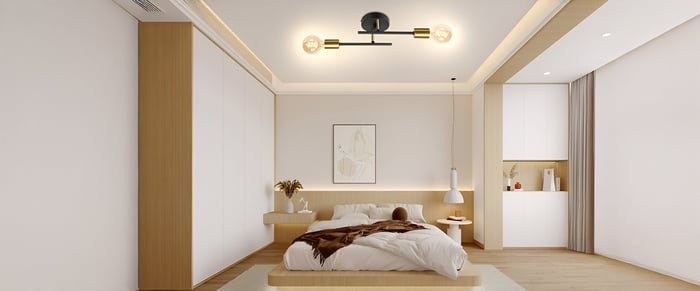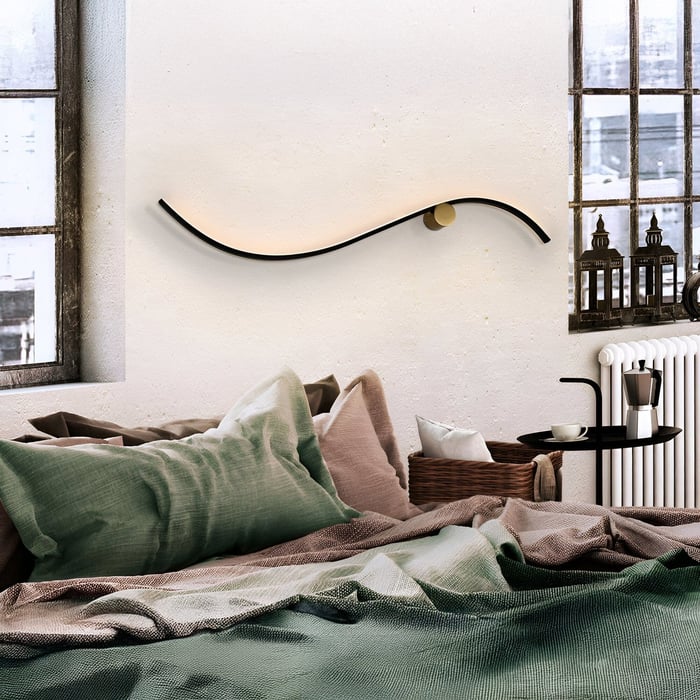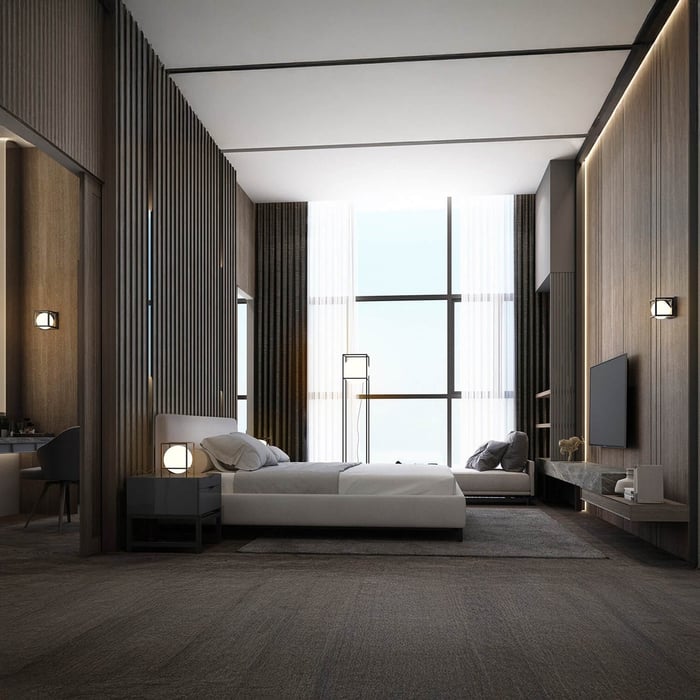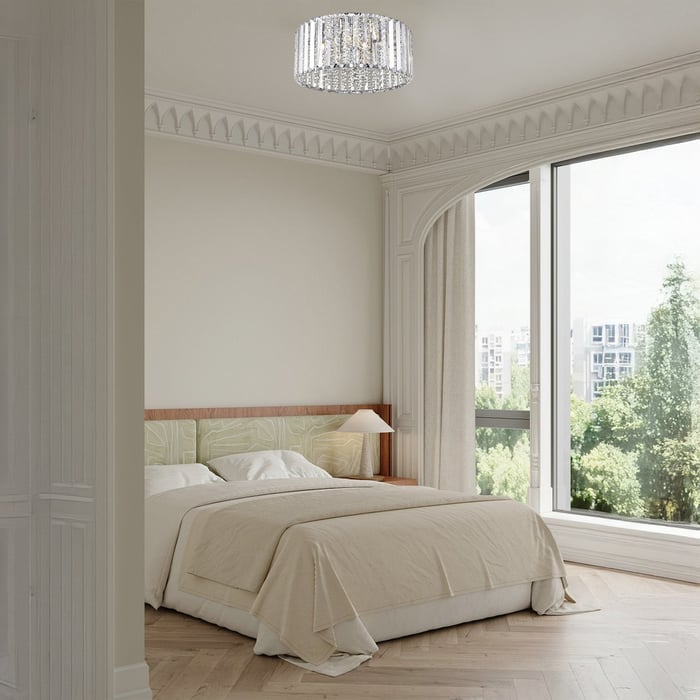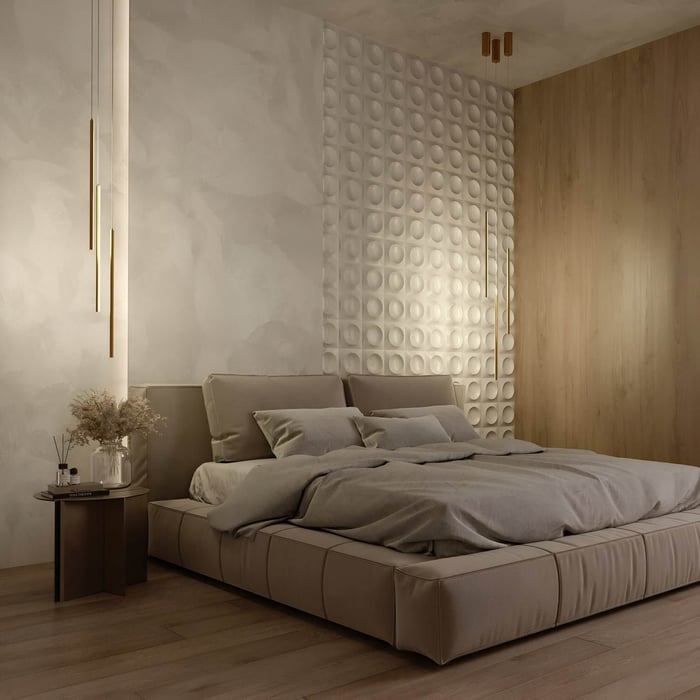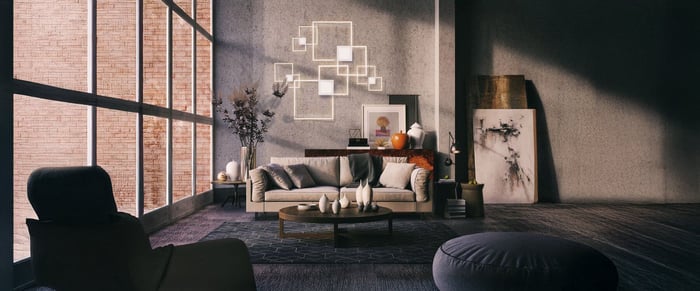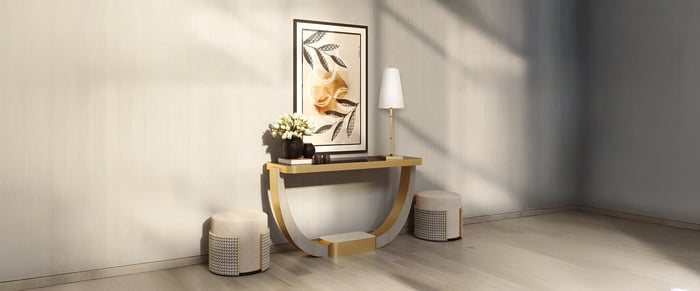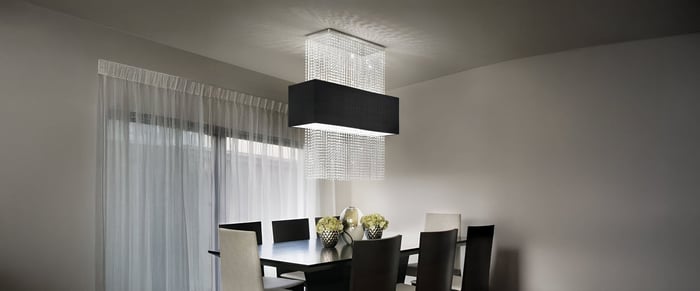Table of Contents
Introduction
Lighting is one of the most overlooked design elements in bedrooms, yet it directly affects comfort, mood, and even sleep quality. The right bedroom lights can make your space feel relaxing and warm, while poor lighting choices can ruin its entire atmosphere. A well-lit bedroom should offer flexibility, bright enough for getting ready in the morning, soft enough for winding down at night, and perfectly balanced for reading or relaxing.
Unfortunately, many homeowners make preventable bedroom lighting mistakes, from choosing the wrong bulb color to placing fixtures in awkward spots. Too often, lighting is treated as an afterthought, but it deserves the same attention as your furniture or color scheme.
This guide explores the most common lighting errors, their impact, and how to fix them. Whether you are designing a new bedroom or refreshing your current setup, these do’s and don’ts will help you create a lighting plan that combines function and style effortlessly. 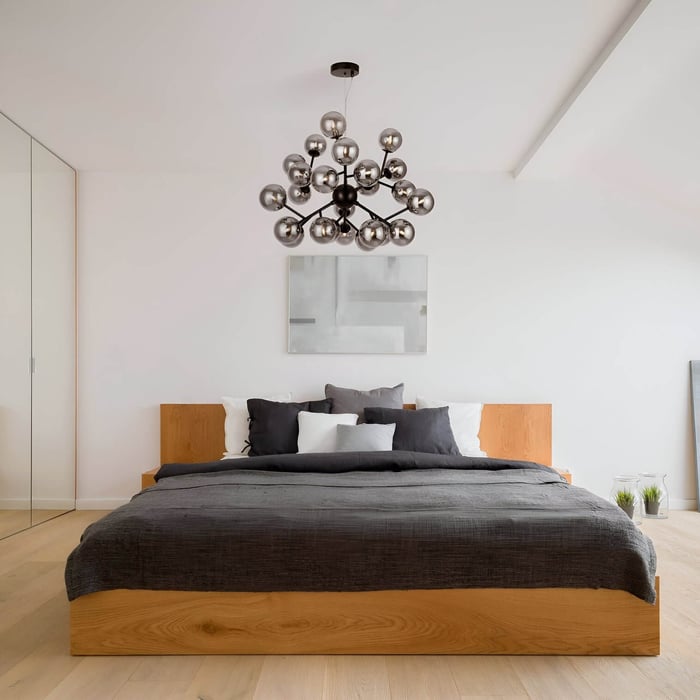
1. Using the Wrong Bulb Color
One of the simplest but most impactful bedroom lighting mistakes is selecting the wrong bulb color. The color temperature of your light determines the mood of your space. Cool white or blue-toned light can feel sterile and disrupt your body’s natural rhythm, making it harder to unwind before bed.
Mistake: Using daylight or cool-white bulbs that mimic office lighting. This creates a harsh, clinical effect rather than a cozy retreat.
Fix: Choose bulbs between 2700K and 3000K labeled “warm white.” This range produces a soft amber glow similar to candlelight, which helps your body prepare for rest. Use the same tone across lamps and ceiling fixtures for visual consistency.
Bonus Tip: If you need bright task lighting for makeup or dressing, install adjustable bulbs or smart lights that allow you to shift from warm to cool tones when necessary.
2. Poor Fixture Placement
Even expensive fixtures can fail if they are installed incorrectly. Poor fixture placement leads to shadows, glare, and uneven illumination that make the room feel uncomfortable.
Mistake: Positioning wall sconces too high, placing lamps too far from where light is needed, or installing a ceiling fixture directly over the bed. These placements cause glare or awkward shadows across the room.
Fix: Mount sconces and wall lamps so their center sits roughly 60–66 inches above the floor. Bedside lamps should be at eye level when sitting up in bed, this prevents light from shining directly into your eyes. If using pendant lights, ensure they hang about 30 inches above your nightstand for optimal reading illumination.
Pro Tip: When designing a bedroom layout, mark where you need light most: near mirrors, closets, reading areas, or artwork. Use your bedroom lights strategically to serve these functions rather than installing them at random.
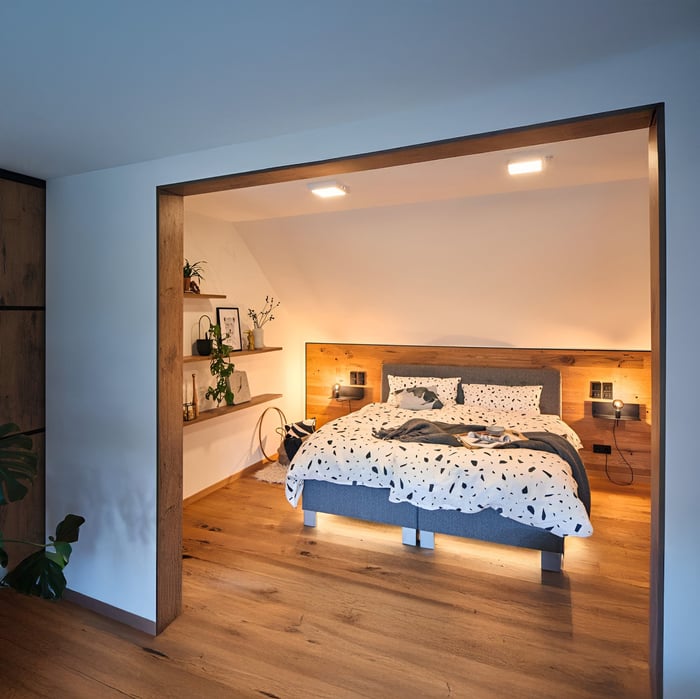
3. Overly Bright Bedroom Lights
Brightness plays a key role in comfort. While visibility is important, too much intensity can destroy the calm, relaxing feel of your bedroom. Overly bright bedroom lights create glare and overstimulation, the exact opposite of what you want in a restful space.
Mistake: Relying only on a single overhead light or using bulbs that are too powerful.
Fix: Introduce multiple light sources to spread illumination evenly. Combine a ceiling light with bedside lamps, wall sconces, or a floor lamp. This creates balance and eliminates harsh contrasts. Always install dimmable switches or smart bulbs to adjust brightness levels throughout the day. A lack of dimmers is one of the most common and easily fixable lighting mistakes.
Bonus Tip: Keep brightness between 1,500 and 3,000 lumens in total for an average-sized bedroom. This ensures comfort without overpowering the space.
4. Inadequate Bedside Lighting
A cozy, functional bedroom needs proper bedside lamps. Skipping or mismatching them creates uneven light and limits functionality.
Mistake: Relying solely on ceiling lighting or using only one small lamp for both sides of the bed. This creates imbalance and poor illumination for reading or relaxing.
Fix: Use matching lamps on each side of the bed for symmetry and equal brightness. If space is limited, install wall-mounted sconces with swing arms or adjustable heads. These options save space while directing light where you need it most.
Design Tip: When choosing bedside lamps, consider proportion. The height of the lamp (including the shade) should be about one-third the height of your nightstand. Soft fabric shades, especially in linen or parchment, help diffuse light and make your bedroom lights feel warm rather than glaring.
5. Ignoring Layered Lighting
A single light source can never meet all your bedroom needs. Ignoring layering is one of the biggest bedroom lighting mistakes, leading to uneven bedroom lighting and a flat, uninspired atmosphere. Thoughtful layering of bedroom lights ensures your space feels balanced, cozy, and functional at any time of day.
Mistake: Depending on one fixture to light the entire room.
Fix: Build your lighting plan around three essential layers:
Ambient lighting for overall brightness, using ceiling fixtures, flush mounts, or recessed bedroom lights to set the foundation.
Task lighting for reading, dressing, or applying makeup, achieved through table lamps or wall sconces positioned strategically.
Bonus Tip: The most successful lighting designs feature dimmers for each layer, allowing you to adjust mood and brightness for different activities. Following these bedroom light layering tips helps create a comfortable, cohesive environment that’s both beautiful and practical.
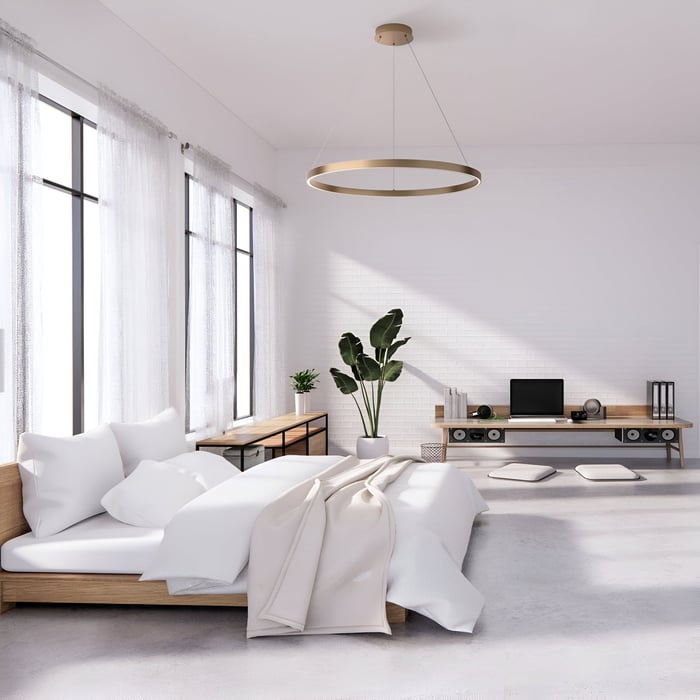
6. Cluttered Lighting Design
Your lighting should complement the room, not compete with it. A cluttered lighting design makes even a beautiful bedroom feel busy and unfocused.
Mistake: Mixing multiple styles, finishes, and bulb tones, for example, pairing an industrial pendant with ornate traditional lamps.
Fix: Choose a unified design style. If your décor leans modern, use sleek metal or matte finishes. Limit the number of finishes in one room to two for a cohesive look.
Design Tip: Matching materials across your bedroom lights creates harmony and sophistication.
7. Neglecting Smart and Energy-Efficient Options
Modern technology allows lighting to be both stylish and energy-efficient. Skipping these advancements limits your control and increases costs.
Mistake: Using old incandescent bulbs that waste energy and offer limited control.
Fix: Upgrade to LED or smart lighting systems. LEDs use up to 80% less energy, last longer, and are available in various color temperatures. Smart bulbs can adjust brightness or tone with a tap or voice command, allowing you to personalize your space instantly.
Bonus Tip: Smart systems prevent uneven bedroom lighting by syncing all your fixtures for consistent illumination. Schedule your bedroom lights to dim gradually at night or brighten slowly in the morning to support a healthier, natural sleep rhythm.
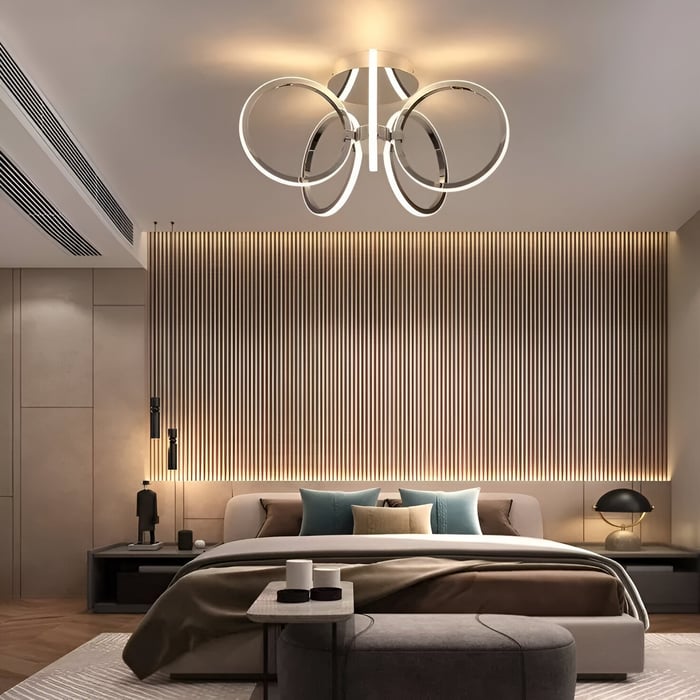
Expert Tips for Getting Bedroom Lights Right
To perfect your setup, follow these do’s and don’ts:
Do:
Use warm light to encourage relaxation.
Add dimmers to every major light source.
Keep fixtures symmetrical for balance.
Combine ceiling, bedside, and accent lights for depth.
Test bulb brightness before installation.
Don’t:
Mix too many finishes or bulb colors.
Ignore placement guidelines or proportional sizing.
Forget task lighting near beds or mirrors.
Overlook the value of energy-efficient options.
Following these principles ensures your bedroom lights enhance both beauty and comfort.
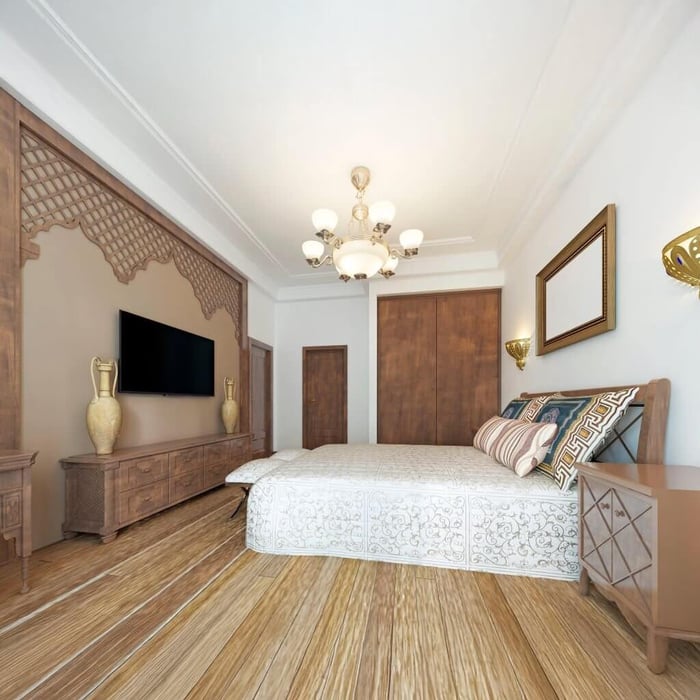
Conclusion
Thoughtful lighting design makes all the difference between a functional bedroom and one that feels like a true sanctuary. Small adjustments, such as fixing poor fixture placement, avoiding overly bright bedroom lights, or improving inadequate bedside lighting, can completely transform the atmosphere.
When you layer your lighting correctly and focus on warmth, proportion, and symmetry, your room becomes a place of balance and rest. Avoiding a cluttered lighting design and using smart solutions ensures your setup remains timeless and energy-efficient.
Well-chosen bedroom lights not only illuminate but also define how you feel in the space. A little planning today will give you comfort and beauty for years to come.
FAQs
What type of lighting is best for bedrooms?
The best lighting combines ambient, task, and accent sources. Warm-toned bulbs (2700K–3000K) create a calm, relaxing atmosphere ideal for bedrooms.
How can I fix overly bright bedroom lights?
Install dimmers or use layered lighting. Combine a ceiling fixture with bedside lamps and sconces so you can adjust brightness depending on your activity.
What color light is best for sleep?
Warm white or amber light helps your body wind down and promotes better sleep. Avoid cool or daylight bulbs, which can interrupt your circadian rhythm.
How do I avoid poor fixture placement?
Position wall lights or sconces about 60–66 inches from the floor, and keep bedside lamps at eye level when sitting up in bed for balanced illumination.
How can I create balanced lighting without clutter?
Use consistent finishes and matching shades. Stick to one or two lighting styles, and layer fixtures such as bedside lamps, ceiling lights, and accent lighting for harmony.
